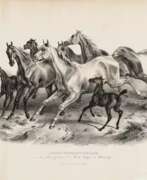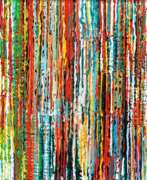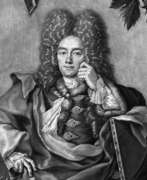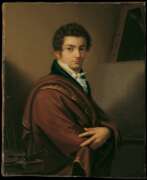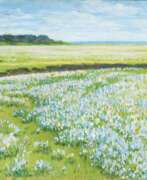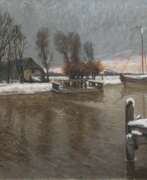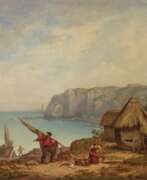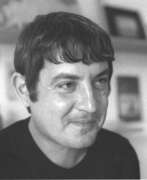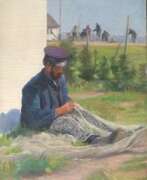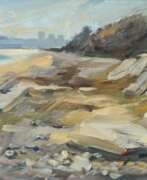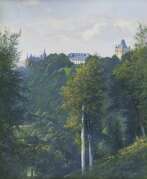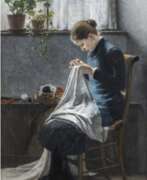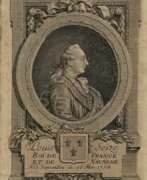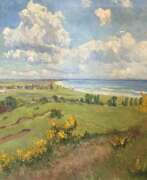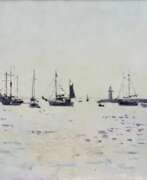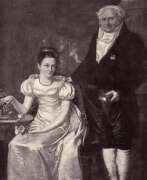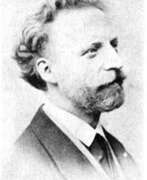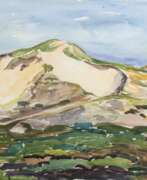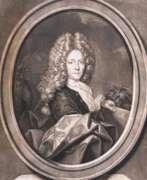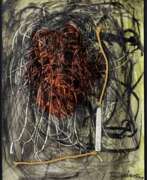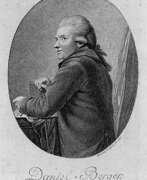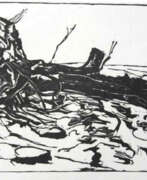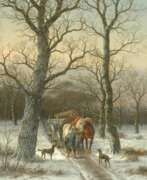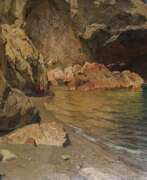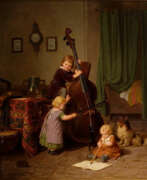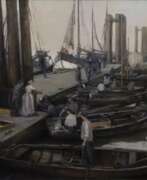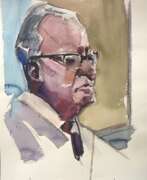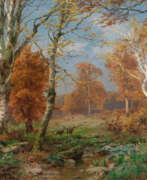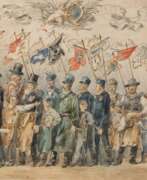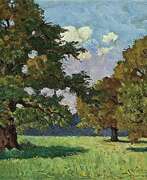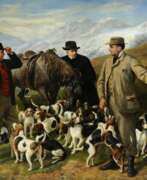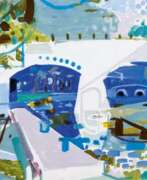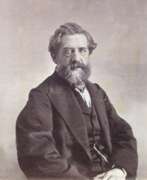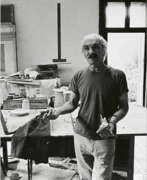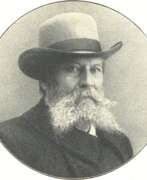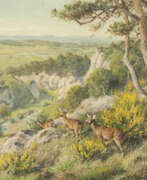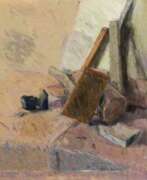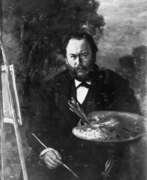Landscape painters Germany
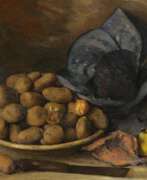

Wilhelm Schmurr was a German painter and co-founder of the Sonderbund in Düsseldorf. His style, characterized by clear expression, was influenced by the Pre-Raphaelites, Symbolists, and Realists. He received several awards and medals for his work and was a member of various art associations. Schmurr taught at the Kunstakademie Düsseldorf and inspired by the farmers after the war, he created scenes of simple life and still lifes. He was awarded the Karl-Ernst-Osthaus-Preis and the Bundesverdienstkreuz erster Klasse and became an honorary member of various artist associations.
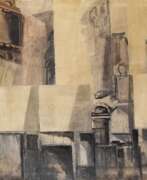

Peter Ackermann was a German painter and graphic artist. He became known for his alienation of architectural subjects. Ackermann was a representative of fantastic realism. The preferred subject of his work was classical Italian architecture, which he drew on site. He put together columns, portals and walls with machine parts, ruins and desolate parts of the city, which were piled up threateningly and thus alienated. In his etchings he showed references to the techniques of the old masters, his pictorial conception is compared with that of Giovanni Battista Piranesi and Canaletto.
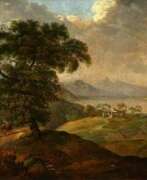

Johann Adam Ackermann was a German landscape painter of the early 19th century. His best-known works are his winter landscapes and watercolours. Johann Ackermann was the brother of Georg Friedrich Ackermann, who also painted landscapes but with less success.
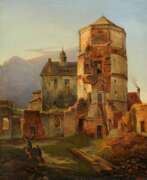

Carl Adloff was a German landscape painter. He is known for his urban scenes, architectural compositions and winter views.
Carl Adloff studied painting at the Düsseldorf Academy of Fine Arts from 1833 to 1843, where he attended the landscape class of Johann Wilhelm Schirmer and the architecture class of Rudolf Wigman. His choice of motifs favoured the Dutch landscape, based on seventeenth-century Netherlandish painting. He often painted seascapes enveloped in a romantic mood of tranquillity in moonlight, morning and evening light.
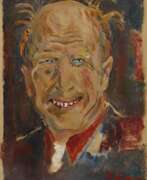

Lucien Adrion was a French post-impressionist painter, draughtsman and printmaker. He is known for his depictions of the French countryside and beaches, as well as of Parisian life, including landscapes, still lifes, figures and landmarks.
Throughout his career, Adrion exhibited his work at the Salons in Paris, where he was praised for his ability to capture the movement and transience of city life.
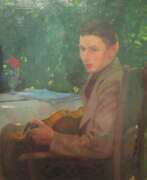

Friedrich Ahlers-Hestermann was a German painter and art writer from Hamburg. He was a member of the Hamburgische Künstlerclub of 1897, as well as of the Hamburg artist's workshop of 1832 and pupil of the Académie Matisse in Paris. After the First World War, he was a co-founder of the Hamburg Secession.
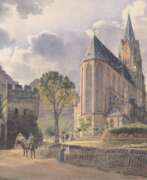

Jakob Alt was an Austrian landscape painter, graphic artist and lithographer. He studied painting at the Vienna Academy of Fine Arts.
He travelled extensively through the Austrian Alps and the Danube regions, painting landscapes. For 5 years he lived and worked in Italy. During his travels the artist also collected an extensive herbarium, which is now preserved in the Provincial Museum of Lower Austria.
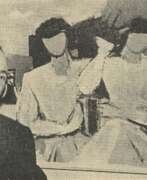

Carl Altena was a German painter. Carl Altena attended the Düsseldorf Art Academy from 1912 and took lessons from Prof. Willy Spatz (1861-1931). In 1914 he was drafted for military service and was taken prisoner in England in 1917. After his release, he settled in Mülheim an der Ruhr in 1919, became self-employed in 1925 and worked as a freelance artist from then on.
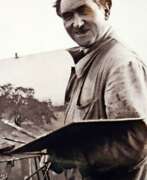

Otto Altenkirch was a German impressionist painter and stage designer. He studied at the Berlin University of the Arts and the Dresden Academy of Fine Arts.
Otto Altenkirch was one of the founders of the Künstlervereinigung Dresden, one of the artists who worked at the Dresden Museum and the Opera House.
For two decades one of his favourite subjects was the linden alley in Rheinsberg. In 1941 and 1943 his works were exhibited in the Große Deutsche Kunstausstellung (exhibition of Nazi-approved art in Munich).
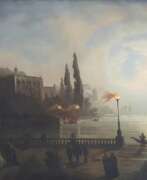

Gustav Adolf Amberger was a German painter and graphic artist. He lived in Rome for two years and learned the painting trade from Peter von Cornelius. One of his first works was the painting The Oceanides. Amberger worked as a designer in the ribbon factory founded by Philipp Trüdinger. Around 1870 he was the court painter to the Landgrave of Hesse. In Antwerp he was a pupil of Joseph van Lerius and made numerous copies, of which Les deux voies is the best known.
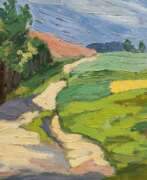

Louise Elisabeth Andrae was a German Post-Impressionist landscape painter and watercolorist. She studied with two landscape painters; Gustav Adolf Thamm in Dresden and Hans von Volkmann in Karlsruhe. She settled in Dresden, but spent long periods on the island of Hiddensee. There, she helped organize a group known as the Hiddensoer Künstlerinnenbund, an association of women artists that included Clara Arnheim, Elisabeth Büchsel, Käthe Loewenthal and Katharina Bamberg. They were regular exhibitors at an art venue known as the Blaue Scheune (Blue Barn), established in 1920 by Henni Lehmann. She also exhibited frequently with a group known as the Kunstkaten in Ahrenshoop.Wikipedia
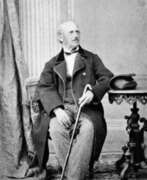

Hermann Anschütz was a German painter of the 19th century. He is known as a painter and teacher who belonged to the Düsseldorf School of painting. He was a professor at the Munich Academy of Fine Arts.
Anschütz painted mythological and historical subjects, as well as landscapes and portraits. A number of his canvases were devoted to oriental themes. In 1860 he was one of the founders of the Munich Christian Art Association.
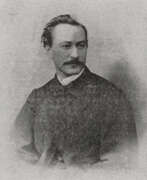

Albert Arnz was a German landscape painter of the Düsseldorf school. He studied painting from 1854 to 1860 at the Dusseldorf Academy of Art, where his two teachers were Andreas and Oswald Achenbach. Arntz painted atmospheric landscapes in Germany, Italy and Switzerland.
Albert Arntz was a member of the Malkasten Art Society and participated in their "living paintings" from 1875 onwards.
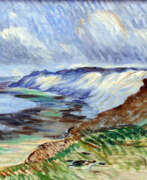

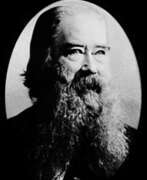

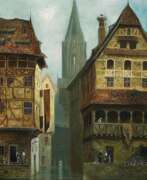

Robert Assmus is a German landscape artist and illustrator. He took lessons from the floral artist Friedrich Wilhelm Völker. He devoted himself entirely to landscape painting, earning a living by illustrating for the newspapers Illustrirte Zeitung, Die Gartenlaube, Daheim magazine and other publications. After the end of the Franco-Prussian War of 1870-1871, he undertook study trips to northern Italy, the Carpathians, Hungary, the Baltic Sea and Switzerland. Inspired by what he saw, he published a magnificent illustrated work, the album “Alsace-Lorraine,” which received positive reviews from the public.
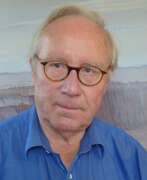

Gerhard Ausborn was a German painter. He studied painting at the Hamburg University of Fine Arts.
Landscapes, ancient sites and modern cities characterise the subject of Gerhard Ausborn's paintings. In parallel, he creates abstract compositions without objects.
The paintings are inspired by impressions the artist gathered during his numerous journeys to many countries around the world. The paintings were not created on location, but always afterwards in his Hamburg studio. They are not intended to be an exact copy of reality, but rather, in memory, what is seen is reduced to the essentials and combined with the artist's own ideas, sensations and experiences.
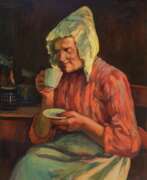

Gottfried Albert Maria Bachem was a German painter and illustrator of the Düsseldorf School. Bachem, who belonged to the Malkasten artists' association from 1921 to 1932, painted portraits, genre scenes and landscapes, and he also illustrated children's books. From 1900 he took part in numerous art exhibitions, including in Berlin.
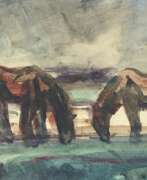

Unica Bachmann-Calcoen (Dutch: Unica Bachmann-Calcoen) was a German-Dutch artist who worked with portraits and depictions of animals, especially horses. She was a pupil of Marie de Jonge (1872-1951) and Martin Monnickendam (1874-1943).
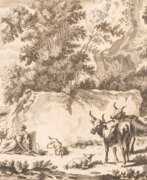

Elias Baeck called "Heldenmuth", was a German painter and engraver from Augsburg. Baeck worked for some time in Rome, then in Laybach, but finally returned to Augsburg, where he died in 1747. His chief works — both in painting and engraving — were portraits and landscapes. His engravings are sometimes signed "E.B.a.H.", standing for "Elias Baeck, alias Heldenmuth".
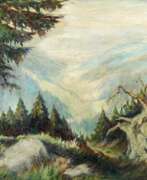

Friedrich August Baer was a German painter who initially pursued law but turned to painting after being inspired by Eduard Schleich's work. He was a self-taught artist who received guidance from Adolf Lier and Hermann Baisch. Baer was a member of the Munich Art Association and exhibited his works in various exhibitions across Germany and Austria. He became interested in painting high mountain landscapes and was occasionally misunderstood for his unique style. Baer was also a writer and book illustrator and received several medals and awards for his artistic achievements.
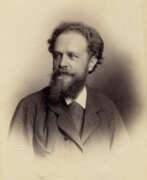

Hermann Baisch was a German painter of the second half of the 19th century. He is known as a landscape painter.
Baisch found inspiration for his landscapes in the neighborhoods around Munich. He often depicted livestock in his paintings, which created a cozy and warm atmosphere. The artist preferred to work en plein air, and his works showed the influence of French Impressionism. His most successful works, in particular, are considered to be "Cows in the pasture", "Morning", "Near Dortrecht at low tide", "On the Dutch Canal".
Baisch was a member of the academies of fine arts in Berlin, Munich and Vienna, as well as a professor at the Art School in Karlsruhe.


Constantin Ludwig Bauer was a German painter. Numerous landscape watercolors come from Bauer. Bauer studied from 1869 to 1873 at the Academy of Fine Arts in Munich. He learned figure painting from Alexander Wagner and copperplate engraving from Johann Leonhard Raab. In 1878 Bauer moved to Obermais (South Tyrol). There he devoted himself to landscape painting.


Hannes Beckmann is a German-Czech-American painter. From 1928 he studied painting at the Bauhaus in Dessau, his teachers included Josef Albers, Paul Klee and Wassily Kandinsky. Hannes Beckmann is best known for painting landscapes.


Adalbert Franz Eugene Begas is a German painter and portrait painter. In 1862, Adalbert followed his brother, the sculptor Reinhold, to the Grand Ducal Saxon School of Art in Weimar, where he began working in the workshop of Arnold Böcklin.
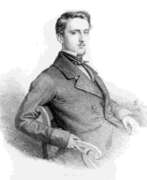

Hiob Carl Oscar Begas was a German painter of the mid-nineteenth century. He is known as a portraitist, landscape painter, historian, teacher, son of the painter Carl Begas, brother of the sculptors and painters Carl, Rheingold and Adalbert Begas.
Oscar Begas was the author of portraits of many prominent German and foreign statesmen and military figures, representatives of science and culture. Becoming a popular painter, he received many orders from King Friedrich Wilhelm IV of Prussia. According to critics, more than in commissioned portraits, Begas's painterly skill was demonstrated in his atmospheric winter and autumn landscapes, on which the master concentrated towards the end of his life.
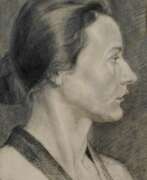

Alois Bergmann-Franken was an academically trained German painter. In the 1930s he began to become known in the Franconian region through his artistic work in the churches. He mastered the fresco technique, encaustic painting, tempera painting and oil painting. By 1965, he had created over 40 depictions of the Way of the Cross in paintings and mosaics, many frescoes and mosaics in churches in Lower Franconia, oil paintings, watercolours, concrete glass windows, woodcuts and sculptures of the Madonna.
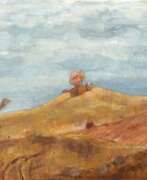

Siegfried Berndt, born 1880 in Germany and passing away in 1946, was a distinguished painter and printmaker whose artistic contributions are often overlooked in art history. After studying at the Dresden Art Academy, Berndt received a travel scholarship that profoundly influenced his art, taking him to cities like Paris, Brussels, Antwerp, London, and Scotland. These travels exposed him to diverse artistic movements, enriching his work with elements of Impressionism, Expressionism, and New Objectivity.
Berndt was especially skilled in the traditional Japanese woodblock printmaking technique, which he employed to explore various artistic styles. This unique approach resulted in color woodcuts with a distinct personality, appealing to a wide range of collectors. His woodblock prints are particularly noted for their innovative use of this traditional technique, blending it with Western artistic movements.
Despite the challenges posed by the two World Wars, Berndt's work found its way into public collections and was recognized for its artistic merit. However, much of his pictorial work was lost due to the turmoil of war. Some of his expressive pastel works, often repeated with small variations, as well as oil paintings, have been documented.
Berndt's art remains relevant for collectors, auctioneers, and experts in art and antiques, particularly for those interested in the intersection of Eastern and Western printmaking techniques. His work, although not as widely known, represents a unique blend of styles and techniques that contribute to the rich tapestry of early 20th-century art.
For enthusiasts interested in staying updated about sales and auction events related to Siegfried Berndt's work, subscribing to updates would be beneficial. This ensures access to the latest information about new sales and auction events related to his art.
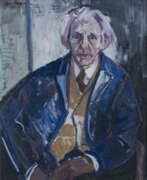

Tom Beyer is a German artist.
Beyer studied at the Düsseldorf School of Applied Arts, traveled throughout Europe, in 1931 opened a studio in Berlin and joined the Communist Party. Although the National Socialists who came to power in Germany in 1937 forbade him to exhibit, from 1939 to 1945 Beyer took part in World War II as a Wehrmacht soldier.
After the war, Beyer led an active social and artistic life. He was also a member of the Association of Visual Artists of the GDR and became its chairman in 1950. As a member of the SED, Beyer reflected in his works the socialist construction in his country, depicting nature and people. He created a large mural for the Löwenschen Saal hall in the Stralsund town hall. From 1972 he taught part-time at the Berlin-Weißensee School of Art.
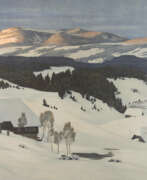

Karl Biese was a German landscape painter, draftsman, and lithographer. After initially working as a theater painter, he received a scholarship to study at the Karlsruhe Academy of Fine Arts in 1883. Biese later returned to Hamburg, where he became a master painter and established his own business. Biese was one of the founders of the Karlsruhe Artists' Association and created lithographs for the association's print workshop. He found inspiration for his nature-themed works during his travels around Karlsruhe, the Black Forest, the Moselle region, and northern Germany. Biese was particularly known for his atmospheric paintings, especially his winter scenes. He primarily worked with oil painting and lithography mediums. Biese also designed collectible images for Stollwerck chocolate company's albums.
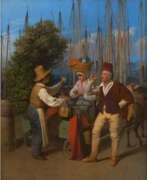

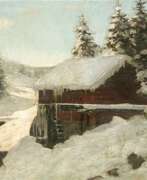

Friedrich (Fritz) Bindewald was a German painter associated with the Düsseldorf School of Art and a member of the German Reichstag.
Friedrich Bindewald studied history painting, anatomy and perspective with Johann Peter Theodor Janssen, Eduard Gebhardt, Hugo Krol and Julius Retting. From 1889 he worked independently on figurative compositions and landscapes with forest motifs from Schwalm, Vogelsberg, Rhen and the Bavarian Alps.
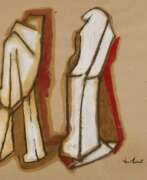

Otmar Blaser is a contemporary German artist. In 1967 he studied at the Werkkunstschule with Prof. Holweck. In 1968 he traveled through Europe, the Middle East, Canada and America. From 1970-1976 he studied at the University of the Arts in Berlin. In 1975 he was a master's student with Professor Bachmann, in 1976 he was an assistant to Professor Kapitsky at the Institute of Visual Communication and Design. In 1977 he was a lecturer at the Volkshochschule Berlin-Neukölln, collaborating freelance with the Theatertreffen Berlin.
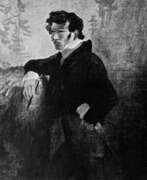

Carl Eduard Ferdinand Blechen was a German landscape painter, recognized for his pivotal role in the Romantic movement. Blechen transitioned from a banking job to pursue art, studying at the Berlin Academy and embarking on inspirational journeys to Italy and Dresden. His work, characterized by its vivid landscapes and emotional depth, reflected a new direction in painting, deeply influenced by his travels.
Notably, Carl Blechen's contributions to art were not limited to his creations; he was a respected educator, shaping the next generation of artists as a Professor of Landscape Painting at the Berlin Academy. Despite his professional success, Blechen battled with mental illness, which ultimately affected his career and led to his early death in 1840.
Carl Blechen's artworks, including "The Interior of the Palm House on the Pfaueninsel Near Potsdam," resonate with the Romantic ideals of natural beauty and emotional expression. While many of his pieces are in private collections, his legacy endures, influencing not only landscape painting but also the broader art historical narrative.
For art collectors and enthusiasts, Carl Blechen's work offers a window into the Romantic era's soul, capturing the transient beauty of nature and the human experience. His life story, marked by both brilliance and struggle, adds a poignant layer to his artistic achievements.
For those interested in the intersection of art, culture, and history, particularly in the Romantic period, staying informed about Carl Blechen's contributions and related art events can be enriching. Signing up for updates on new product sales and auction events related to Blechen's work is an excellent way to stay connected with this influential artist's enduring legacy.
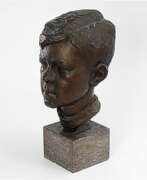

Kurt Bohn was a talented German painter, sculptor, designer and writer. Born into a creative family, he learnt the basics under the guidance of his father, Oskar Bohn. His perseverance and pursuit of artistic excellence led him to Berlin, where he became a pupil of Fritz Klimsch between 1931 and 1935. Under his guidance, Kurt Bohn honed his skills and broadened his artistic horizons.
By 1938, Kurt Bohn had established his own studio in Berlin, signalling his growing independence and the development of his artistic vision. World War II forced Kurt Bohn to move to Ulm in 1945, where he lived until his death.
Kurt Bohn's work has left an indelible mark on the art world, demonstrating his versatility and dedication to art.
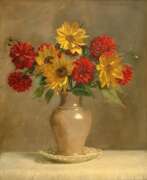

Theodor Bonenberger is a German painter and cavalry officer. He studied with Jacob Grunenwald and Karl von Geberlin at the Stuttgart Art School, then from April 30, 1887 - at the Royal Academy of Arts in Munich with Johann Kaspar Herterich and Carl von Marr. Has been on study trips to Italy, France, Spain and the UK. After completing his studies, he settled in Munich as a freelance artist. Bonenberger also held the rank of major in the cavalry in reserve. From 1895 he took part in many exhibitions in Munich, Düsseldorf and Vienna. In 1936, he completed a portrait of Adolf Hitler, which he presented to Eva Braun for her birthday. He dealt with flower, genre, portrait, landscape and nude painting.
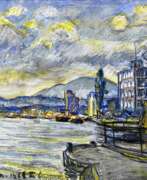

Erwin Bovin is a German painter and poet. He received his first art education at the School of Applied Arts in Neuchâtel under the direction of William Racine. He took part in the First World War as an interpreter. During this time, he created, among other things, drawings and watercolors depicting the front in the Argonne forest. After the war, he continued to study and worked as an art teacher. In 1932-1942 he lived as a freelance artist. After leaving his position as a teacher, he went to Amsterdam to visit the Rembrandt exhibition there, and then stayed to live in the Netherlands. In addition to landscapes, Bovin painted numerous portraits and family paintings for wealthy Dutch people.
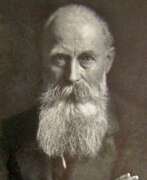

Eugen Felix Prosper Bracht was a German landscape painter.
A late Romanticist painter, Bracht was known for his moody landscapes and coastal scenes in North Germany, and began a sketching trip through Syria, Palestine and Egypt from 1880 to 1881. In 1882, he became a Professor of Landscape Painting at the Prussian Academy of Arts.
Later, Bracht became a representative of German Impressionism.
In 1901, he obtained a teaching position at the Dresden Academy of Fine Arts that he held until 1919.
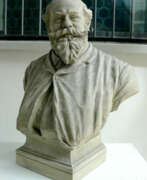

Anton Braith was a German painter of the second half of the nineteenth and early twentieth centuries. He is known as a painter, landscape painter and animalist.
Anton Braith was active for a total of 53 years. His creative path consists of four periods. At first, the artist imitated Dutch painting, then specialized in portraits of animals surrounded by nature. Between 1874 and 1894 he produced his most outstanding works, characterized by vividness and drama. In his last years he focused on animal scenes in mountain meadows, gradually retiring from active artistic endeavors.
Braith was professor of painting at the Munich Academy of Painting and an honorary member of the Royal Academy of Fine Arts Munich.


Hans Heinrich Georg Brandes was a German painter and teacher of the mid-nineteenth century. He began his career with historical painting, then devoted himself entirely to landscapes. His works, especially his depictions of the Bavarian mountains, earned him the prestige of being a skilled landscape painter. He also created still lifes and portraits.
Brandes taught painting and drawing in Braunschweig and was curator of art in the museum of Duke Anton Ulrich. He participated in the restoration of the frescoes in Brunswick Cathedral. In his works Brandes combined the principles of classical painting with the monuments of Romanticism, and demonstrated a stylistic connection with the "Nazarenes" or "Munich landscape painters".
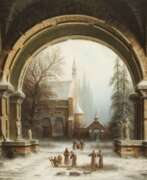

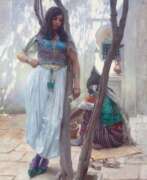

Ferdinand Max Bredt was a German orientalist painter. He traveled extensively, including Italy, Greece, Turkey, and Tunisia, and created a series of paintings of harems and odalisques as well as landscapes and academic paintings.
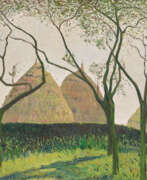

Julius Bretz was a German painter of the late nineteenth and first half of the twentieth centuries. He is known as a painter and graphic artist, a painter of landscapes and floral still lifes, a representative of the Düsseldorf and Hague Schools.
Julius Bretz was one of the four founders of the Düsseldorf art association Sonderbund and a founder of the Rhine Secession. He was also a member of the artist association "Malkasten" and a member of the Cologne and Bonn artist associations.
Bretz's paintings can be seen today in art museums in Bonn, Düsseldorf, Cologne, Wuppertal, Zurich and other cities
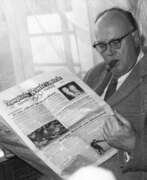

Franz Bronstert was a German engineer and painter. Before World War I Bronstert visited and finished the superior school for engineers in Hagen. He served during the war in the rank of Lieutenant and later „Rittmeister" equivalent to Captain. As a prisoner of war at Ripon, Yorkshire he got into contact with artists Fritz Fuhrken and Georg Philipp Wörlen and started with his own artistic work. These contacts led to the foundation of the group of artists „Der Fels" (The Rock). Past the war he settled in Hagen and made contact with the group around collector Karl Ernst Osthaus especially with Christian Rohlfs. The latter influenced the work of Bronstert considerably. Membership in „Der Fels" led to numerous exhibitions all over Germany and Austria between 1921 and 1927. Bronstert’s art developed from radical expressionism of the early twenties to a realistic phase and finally to a reformed impressionism as the artist claims himself. Bronstert finds his motifs mostly in nature. Even though Bronstert mastered several techniques, like oil painting, drawing, woodcut it was the watercolour painting that he loved most. Bronstert was both a technical and artistic talent. He was successful in his job and was a member of the board of VARTA with several international patents on his record when he retired. Past retirement he concentrated solely on his art again. Works by Bronstert can be found in the Schneider Collection, Museum Baden, Solingen; in the collections of Karl Ernst Osthaus-Museum in Hagen; in the Museum Schloss Moyland, in the Von der Heydt-Museum, Wuppertal, in the Bavarian State Painting Collections, Munich,and in the art museums of Soest, Germany, Iserlohn, and Lüdenscheid as well as in private collections.
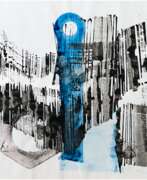



Johann Wilhelm Brücke was a German landscape and architectural painter. He studied painting at the Berlin Academy of Arts.
Johann Wilhelm Brücke spent 5 years in Italy with the support of his teacher Johann Erdmann Hummel and a small grant, creating landscapes and vedotes of Roman architecture. The artist found his own style early on and his work is easily recognisable by his use of reddish sunset colours. However, some of his later paintings are reminiscent of Edward Gertner's almost photographically realistic works.
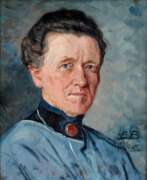

Elisabeth Büchsel, full name Elisabeth Charlotte Helene Emilie Büchsel, was a German artist. She studied painting in Berlin, Dresden, Paris and Munich.
Elisabeth Büchsel painted mainly portraits and landscapes of Rügen and Stralsund. From 1904 she lived and worked on the island of Hiddensee from spring to autumn.
Büchsel was a member of the Association of Visual Artists of Germany.
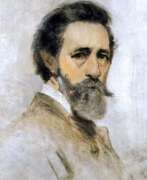

Anton Burger was a German painter, draftsman and etcher. He was a prolific and versatile painter, producing works in almost every genre. His paintings sold very well and, in the area around Kronberg, it was considered a sign of good taste to have a "Burger" in one's home. In 1861, he and Jakob Fürchtegott Dielmann (an old friend from his days at the Städelschule) founded the Kronberg Artists' Colony, where he remained until his death. He was highly regarded and came to be known as the "King of Kronberg".
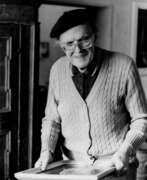

Albert Burkart was a German painter. His artistic work was based on the style of the New Objectivity around 1925. Burkart began working as a freelance painter in Munich in 1925. In the following years he created pictures and graphic sheets for the annual exhibitions in Munich and the galleries Heinemann and Tannhäuser. He also worked for Munich publishers, including the magazine Die Jugend. The Bavarian state and the city of Munich bought several of his works. He painted and drew industrial landscapes, workers, suburbs, old people and children in the big city before starting to create religious paintings, frescoes and stained glass windows and work for churches. One of his first religious works was the monumental painting of the choir of the Church of St. Joseph in Memmingen. His paintings combine sacral depictions with rich narratives and an architectural conception of space. Albert Burkart was a member of the artists' association "7 Munich painters". The association existed between 1930 and 1937.
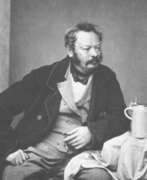

Heinrich Bürkel was a German artist of the mid-nineteenth century. He is known as a painter and graphic artist, representative of the Biedermeier style.
Heinrich Bürkel specialized in genre and landscape paintings, especially winter landscapes. He often used Staffage and depicted animals. His work showed the influence of the old Dutch and Italian masters. Bürkel enjoyed great popularity, his paintings were actively acquired for private collections, including in America. The master painted about 1000 paintings and created about 6000 drawings.
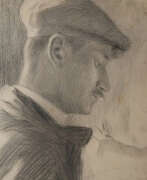

Georg Burmester was a German artist of the late 19th - first third of the 20th centuries. He is known as a painter, graphic artist, impressionist, representative of the Düsseldorf art school, and teacher.
Burmester worked mainly in the genres of landscape and marinas, but among his works there are also still lifes, as well as works in the genre of nude. He was a teacher at the Kassel Art School from 1912 to 1930 and was promoted to the rank of professor in 1917.


Volker Bußmann is a contemporary German artist known for his diverse and eclectic body of work. He explores various artistic genres, including landscape and figure painting, op-art, and printmaking. His artistry demonstrates a wide range of influences and styles, making him a versatile and dynamic artist. Bußmann's work may incorporate a combination of traditional and contemporary elements.
